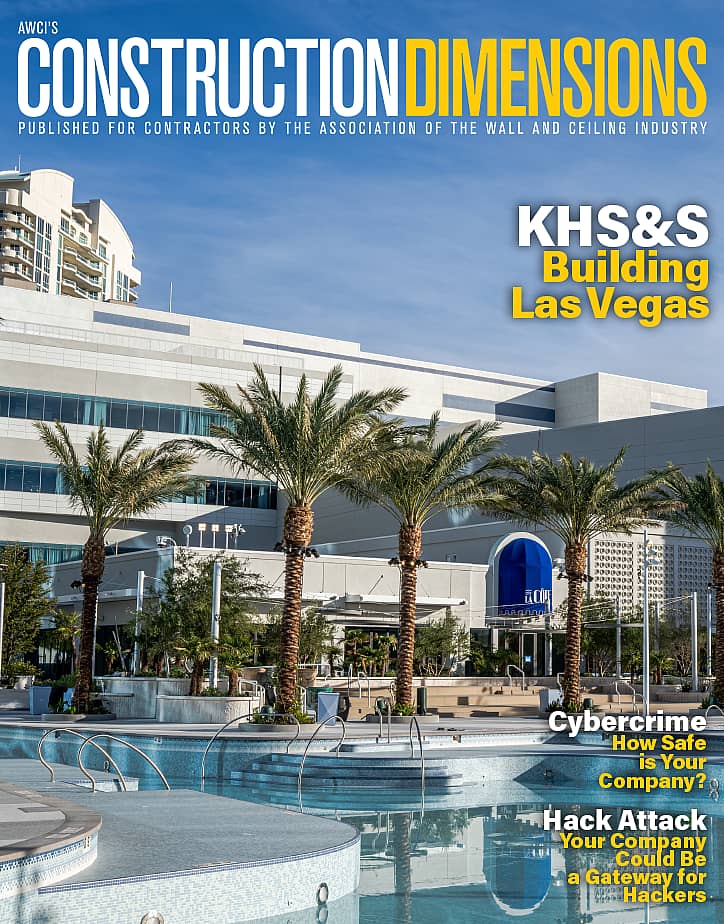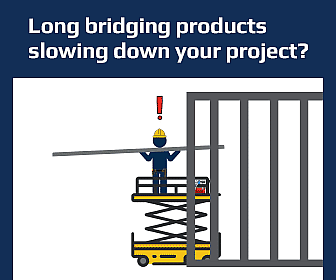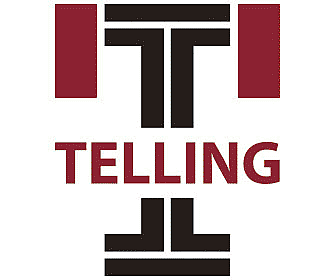Q: What does the term “thermal barrier” mean?
A: A thermal barrier is required by the International Building Code to provide separation from foam plastics and an interior space. Specific language for this requirement can be found in Section 2603.4 of that code. The exact wording is “foam plastics shall be separated from the interior building by an approved thermal barrier.” Further in the sentence it allows for the use of half-inch regular core gypsum board to serve as an acceptable thermal barrier. The International Residential Code has the same requirement. The word “core” was added to clarify that the basis of performance is not a Type X or C core, which are the cores that are found in gypsum boards to meet fire-resistance ratings. The concept of a thermal barrier has been in place for many years. In the late 1970s, interest in conserving energy drove the use of foam plastics in exterior walls. Knowing the inherent fire properties of plastics, it soon became apparent that some sort of protection should be mandated.
Recently the increased use of spray polyurethane foams has brought this concept and its requirements back to the forefront. Stud cavities are being filled with SPF for the insulation’s excellent thermal-resistant properties. However, using this insulation does come with the requirement for a thermal barrier.
When the concern first came forward, there was no recognized test standard specific to the needed separation. The idea was to follow the concept of what is called a “finish rating,” which is a rating applied to fire-resistance testing. A finish rating of a material is the time in minutes required for the temperature between the exposed panel and the supporting member to reach 250 degrees Fahrenheit over ambient temperature. The theory here is that this would be the temperature at which wood framing would start “charring.” The benchmark for performance would be the fire-resistive properties of half-inch regular core gypsum board. The fire-resistive performance of the panel was deemed acceptable in providing a level of fire separation. Therefore, these panels set the threshold of performance for materials to follow.
Over the years, a test standard did emerge specific to the actual condition. This standard is NFPA’s “Standard Method of Fire Tests for the Evaluation of Thermal Barriers Used over Foam Plastic Insulation.” Similar to fire-resistance testing, ASTM E119, Standard Test Methods for Fire Tests of Building Construction and Materials, there is fire exposure on one side while temperatures are monitored on the unexposed side. In ASTM E119, “the other side” means the unexposed side of an assembly, whereas in NFPA 275 it is the other side of the material that is being evaluated. NFPA 275 is a product test where ASTM E119 evaluates the entire assembly.
The performance goal for a thermal barrier is to keep the temperature at the location of the foam plastic below 250 degrees Fahrenheit for a minimum of 15 minutes after the test is started. Temperature on the exposed side is the same in both the ASTM E119 and the NFPA 275 tests. The fire must be controlled to where the temperatures on the exposed side must follow the ASTM E119 time-temperature curve. That translates to temperatures within the first five minutes reaching 1,000 degrees Fahrenheit. Similar to an assembly test, there is a structural component in question. This means that the material being tested must have the structural integrity to remain in place for the duration of the test.
From a contractor’s perspective, it is important to understand that if foam plastic is specified on a project, it follows that there will be regulations that must be met. Like many regulations, there are prescriptive and performance options for the contractor to follow. Covering the foam plastic with half-inch regular core gypsum boards is the prescriptive solution. The product’s use is written in the body of the code and should be acceptable to the authority having jurisdiction over the project. Alternate methods may be substituted based on the product’s or method’s performance characteristics.
Many products and systems have emerged to meet this requirement. Some solutions include a coating over the plastic. These products or methods should have the appropriate testing to support the published claims. This testing has many options, such as NFPA 275, ASTM E119 and NFPA 285, Standard Fire Test Method for Evaluation of Fire Propagation Characteristics of Exterior Non-Load-Bearing Wall Assemblies Containing Combustible Components.
At first this may seem confusing, but the manufacturer should have the appropriate building code evaluation report from a recognized third party that states the product was evaluated for code acceptance as a thermal barrier. Working with the building product manufacturer or distributor to determine if the desired product will provide the required level of separation is key to a successful installation. Understanding the position of the local authorities having jurisdiction will also be crucial if issues are up for local interpretation.
Robert Grupe is AWCI’s director of technical services. Send your questions to grupe@awci.org, or call him directly at (703) 538.1611.






